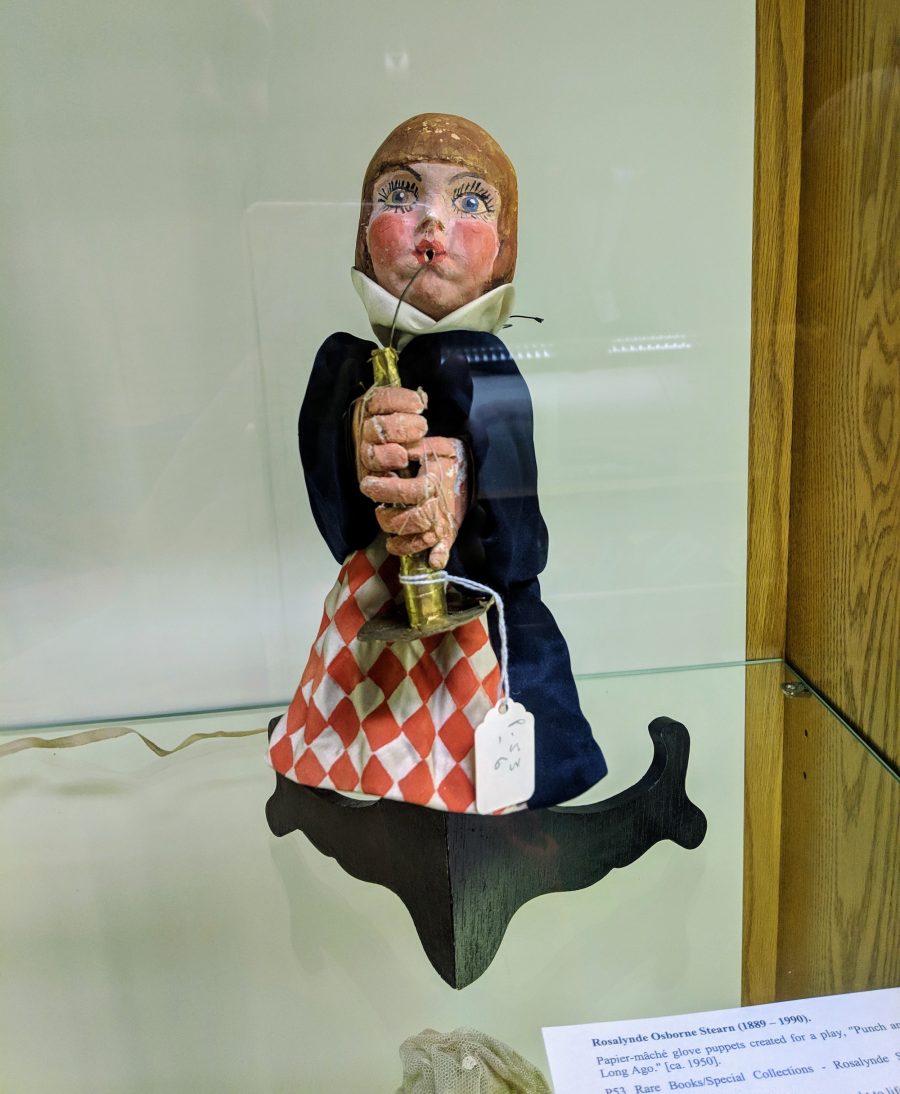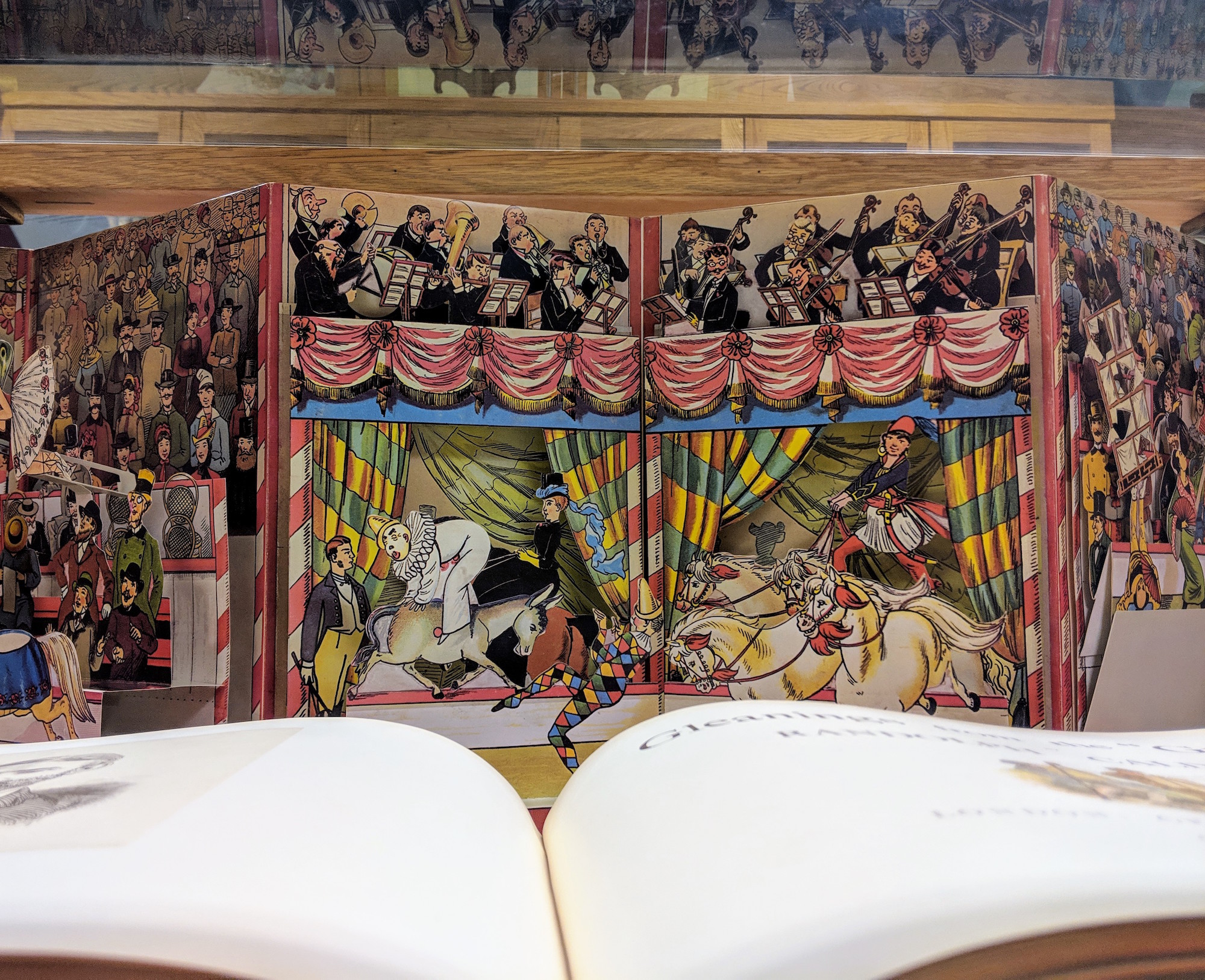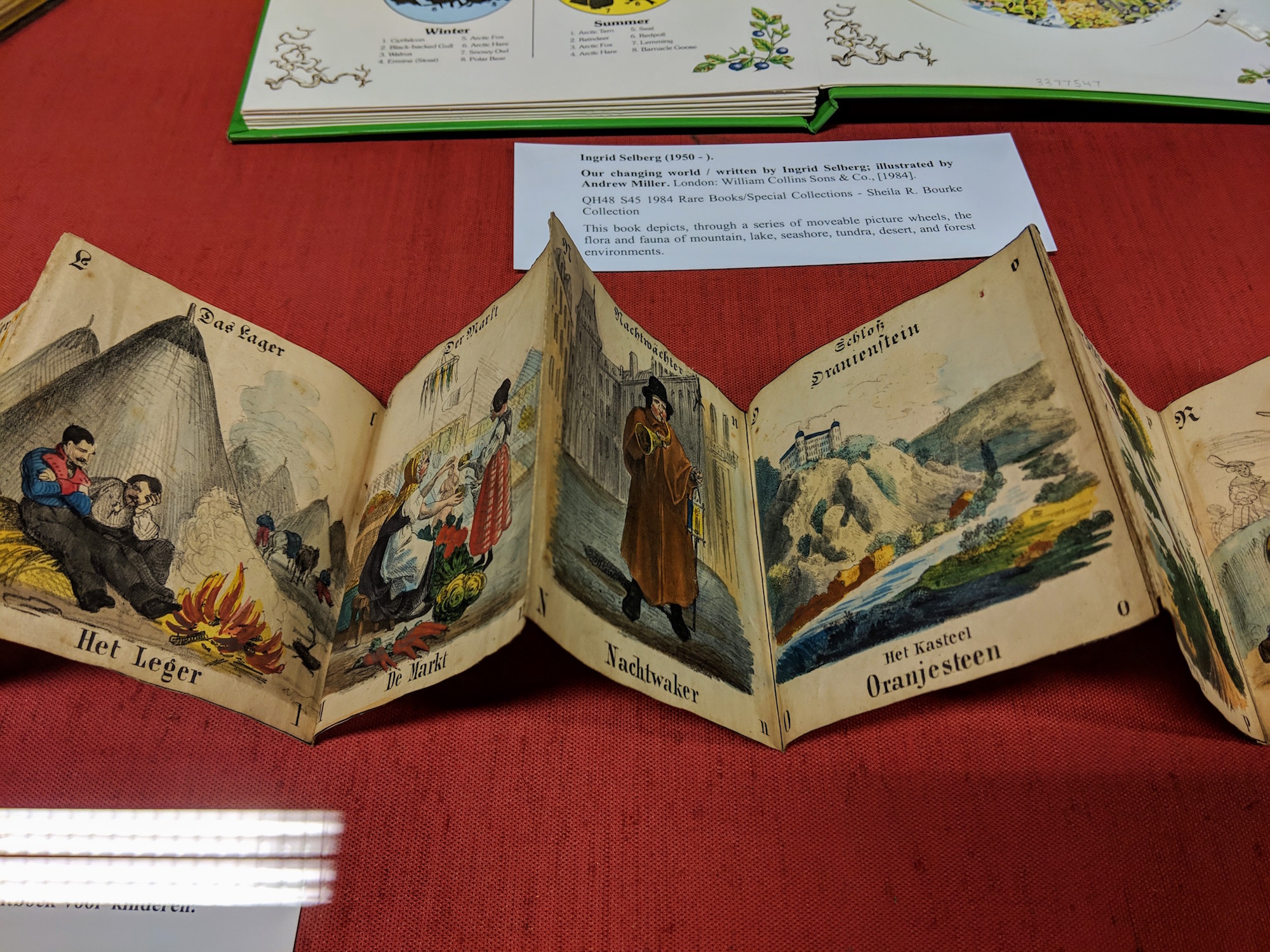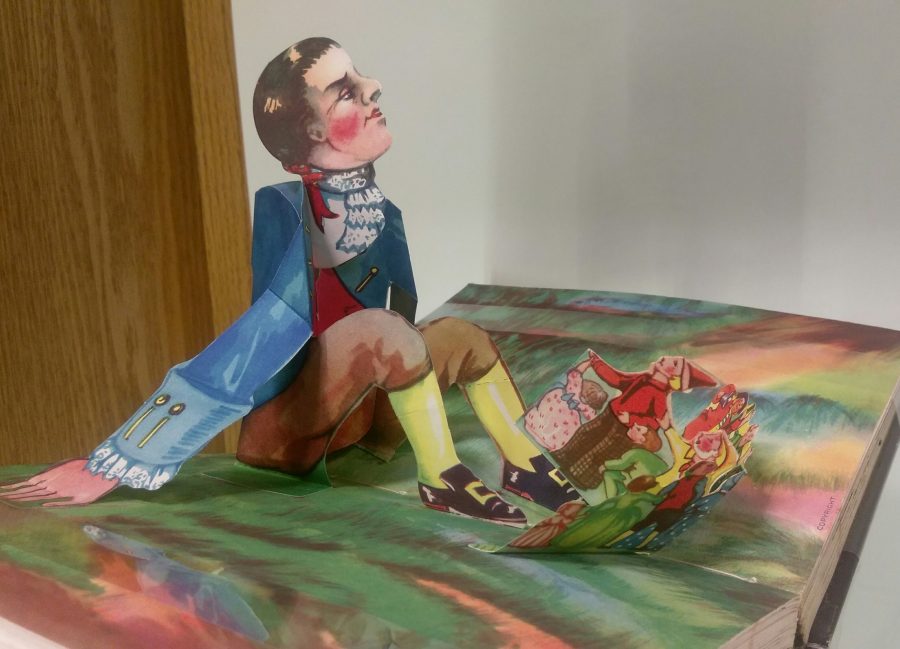Guest Post by. Jacqueline Reid-Walsh, Associate Professor, Pennsylvania State University, College of Education, Curriculum and Instruction and Department of Women’s, Gender, and Sexuality Studies
Coming back to McGill University after being away for a couple of weeks, I got off the elevator at the fourth floor and spied the display “Books that Pop: Historical Children’s in Rare Books and Special Collections.” Truth be told, in the intense but pleasurable period leading up to the November 21st talk, (see the event page for details and video), I did not have the time to walk around and gaze at the objects.
Now that I am home for the winter break, I can look anew at the display with fresh eyes. The well-chosen and beautifully displayed objects highlight the topics of illustrated books and movable books in multiple interesting ways. The display features items from the Sheila Bourke Collection in the flat display cases, and puppets from the Rosalynde Stearn Puppet Collection, in the high wall cases behind.

Papier-mâché glove puppets created for a play, “Punch and Judy of Long Ago.” [ca. 1950].
P53 Rare Books/Special Collections – Rosalynde Stearn Puppet Collection
A colourful collection of 11 characters brought to life by the puppeteer and puppetry historian, Rosalynde Stearn, whose collection of puppets and puppetry related books is amongst the most unique collections housed at Rare Books and Special Collections.

Lothar Meggendorfer’s popup Circus. Meggendorfer, the 19th-century artist is widely considered the greatest innovator in the field of moving picture books.
The spatial logic of the display highlights how the strengths of the Bourke Collection materials complement the materials in other collections. I was struck by one theme that cross-cuts the collections –that of Gulliver’s Travels. In the Bourke collection, there are both 19th century and 20th-century examples—an American McLaughlin brothers picture book and an impressive Bookano book pop-up from the 1930s of a giant Gulliver sitting contemplatively in the centre of the two-page spread of the book. There is also a French picture book from the 1920s illustrated by Job in a cloth pictorial binding. These books contrast with the delicate but eerie watercolours of Arthur Rackham in an early 20th-century edition from the Rackham collection.
My favourite items change as I walk around. I am a fickle viewer since each time I have new ones. My passion remains with the interactive books since gazing at them compels me to want to touch them and examine them. The display highlights the accordion-fold books particularly well since the width of the flat cases allows the horizontal spread of the panoramas to be revealed. These include the Meggendorfer I referred to above and five others from the early to late 19th century that show the cross-cultural nature of the McGill collection. These are: a French-Canadian spelling book (1810) from the Lande Canadiana Collection; a colourful German picture alphabet and phrase book (circa 1828); a tiny panorama of Beasts with 15 delicate, hand-coloured engravings, including the quagga, an extinct kind of zebra (1850), and a spectacularly long wordless panorama depicting Queen Victoria’s coronation procession (1838) that stretches out to 18 feet, all in the Bourke Collection.

A German accordion format alphabet book with hand-coloured illustrations. Neues Bilderbuch für Kinder = Nieuw prentboek voor kinderen. Mayence : Joseph Scholz, [1828?]. PE1155 N54 1828 [By Consultation] Rare Books/Special Collections – Sheila R. Bourke Collection
The tall wall cabinets effectively display the depth achieved by two modern tunnel books. Since the books are close to eye level, a viewer can appreciate the design by looking down and out at the objects. These are two modern books, Space Colony by Joe Burleson (see the video below) and the droll Tunnel Calamity by Edward Gorey, the title playing off the technical term for the format and also evoking the 19th-century rage for peep show/ tunnel books about the sometimes unbuilt Thames tunnel. These are all in the Bourke Collection.
I encourage visitors to McGill libraries to come up to the fourth floor and take a couple of turns around the lobby exhibit to see what their favorite books are. Be sure to return when the display is finished to come to the Reading Room to look closer and play with a few.
The collection can be consulted in the Rare Books Reading room Monday to Friday, 10 AM to 6 PM. Contact Liason Librarian Elis Ing for reference guidance.
The Exhibition runs until February 22, 2019.














Leave a Reply
You must be logged in to post a comment.